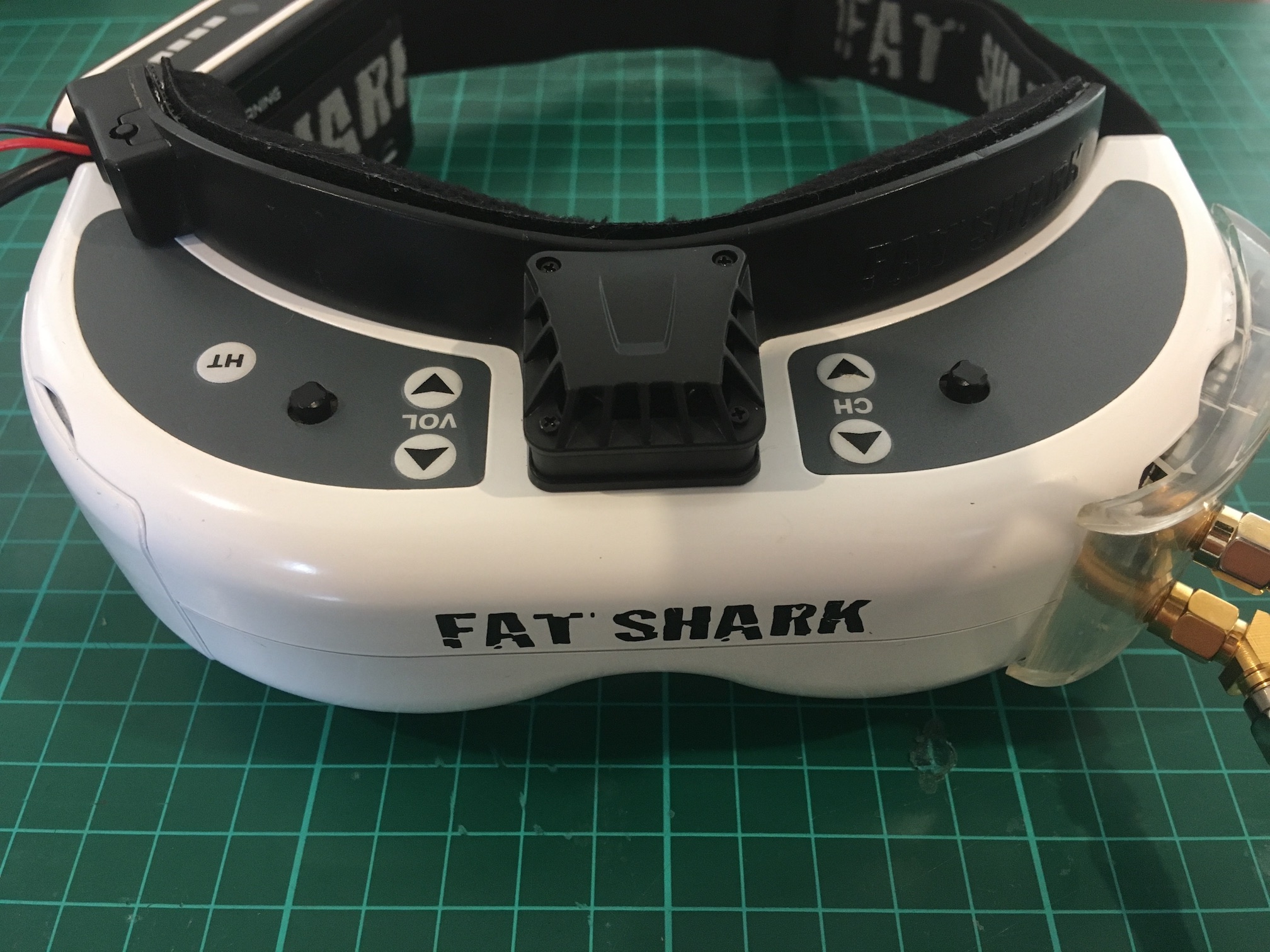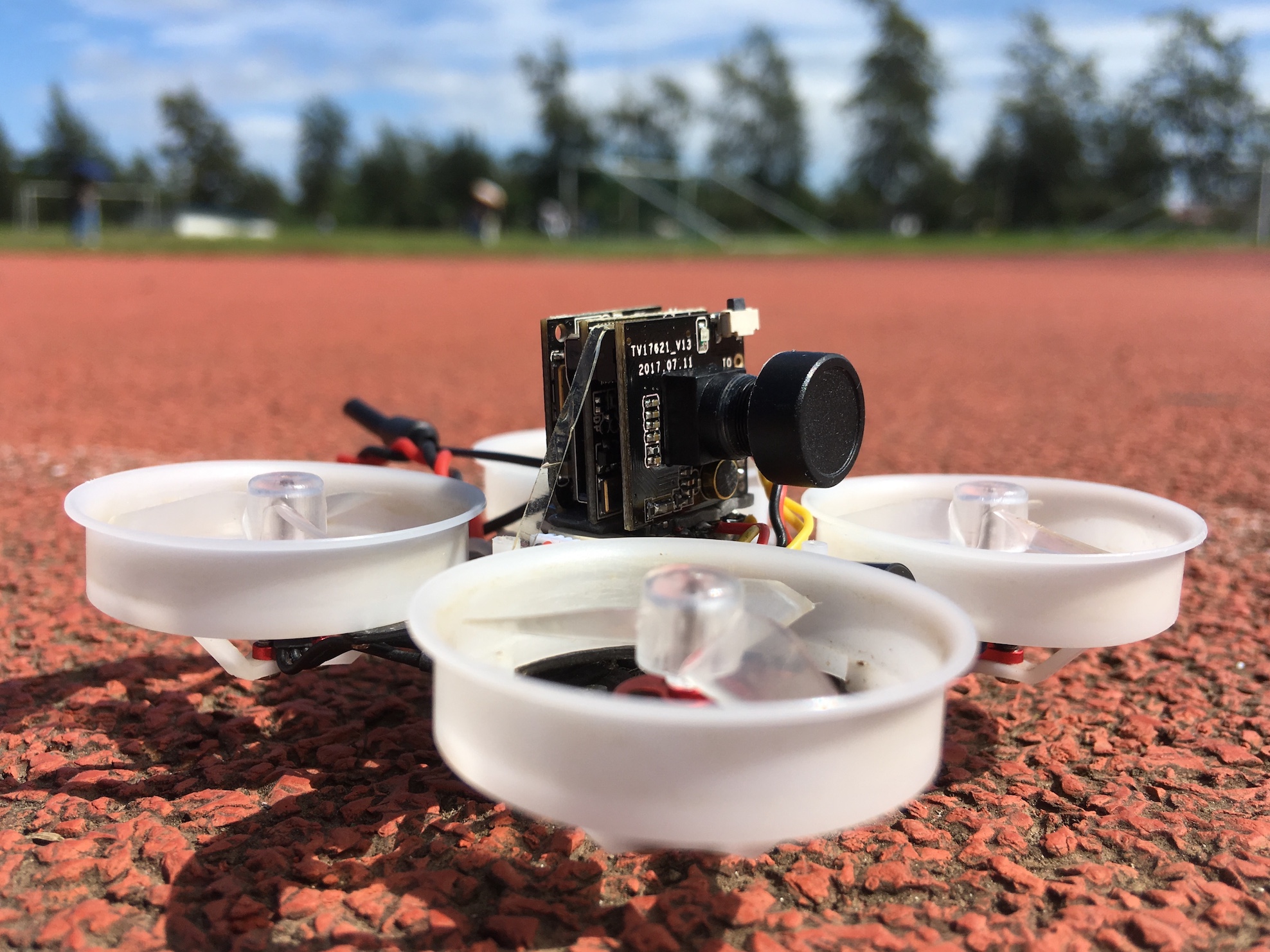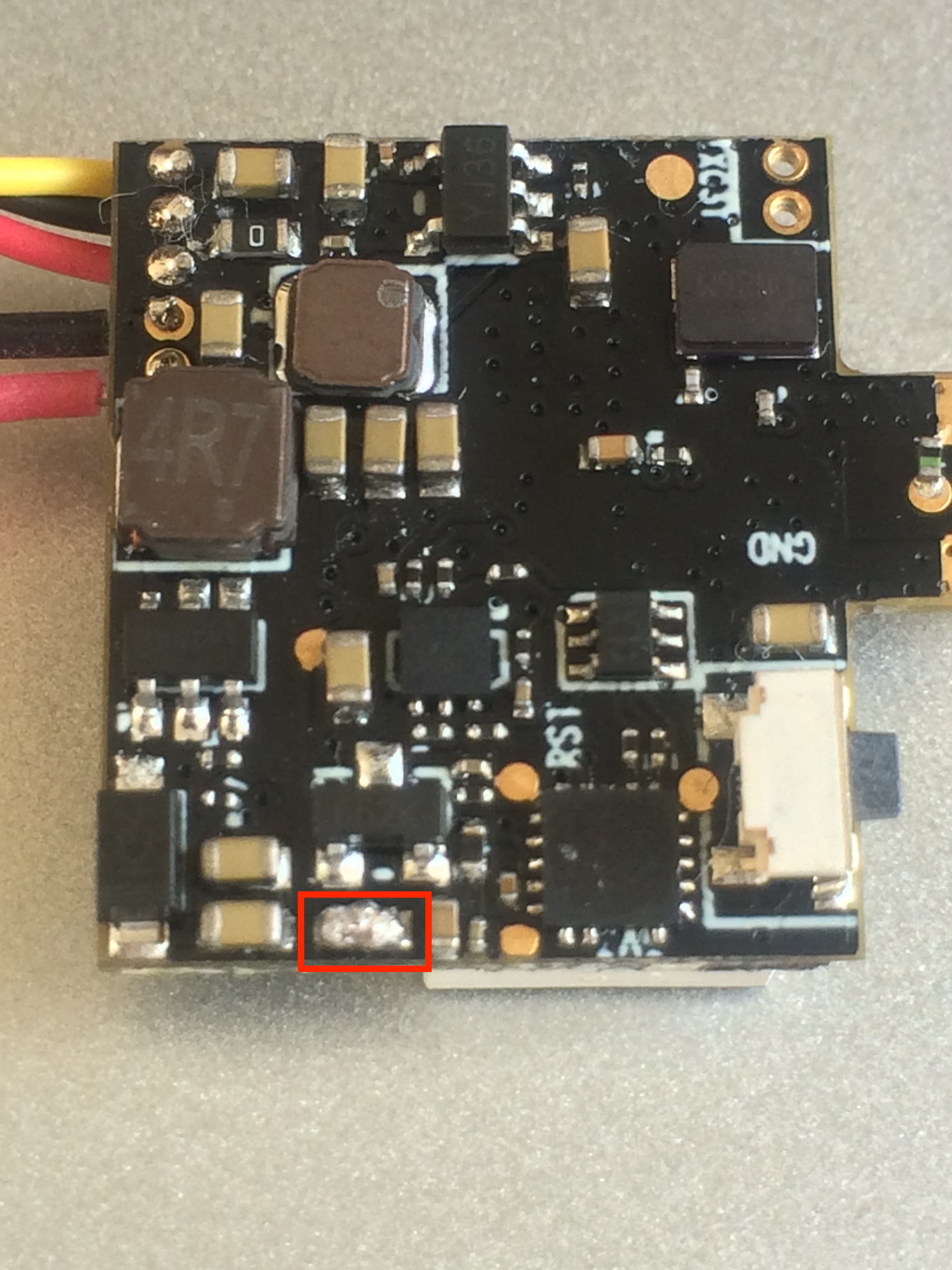Specifications
- Size: 138*129*79mm (without antenna)
- Weight: 164.7g
- Display: 3 inches
- Resolution: 800*600 pixels
- Antenna Connector: RP-SMA
- Working Voltage: 1s Battery (3.7-4.2v)
- Working Current: 350-450mA
- Receiving Sensitivity: -95dBM
- Built-in Battery: 500mAh 3.7V
- Working Time: 1h
Features
- Small and Light, convenient to carry
- With One Key Auto Search function.
- Only English available.
- Support OSD function, can display current power
- Support AV-IN
- Single receiver with clover and panel antenna, stronger receiving signal.
- Built-in 3.7V 500mAh battery, 1h working time.
Package Contents
VR006
RP-SMA Antenna
Head strap
USB charging cable
Cleaning wipes



 And just like that the VTX03 lit up back to life!
And just like that the VTX03 lit up back to life!